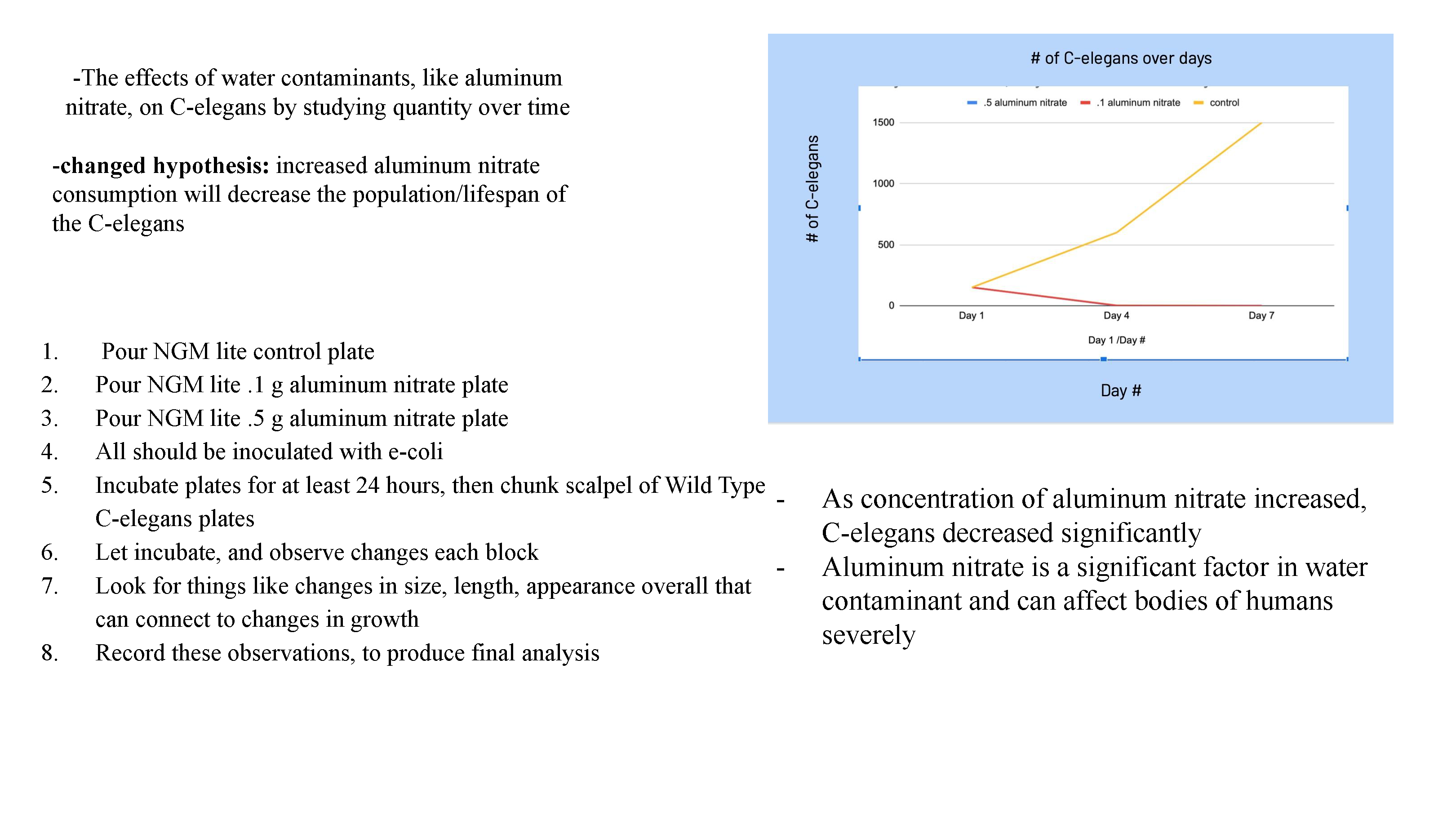Effects of Aluminum Nitrate on C-elegans
Abstract:
Bibliography/Citations:
No additional citationsAdditional Project Information
Project files
Research Plan:
- Question or Problem being addressed
-
- The effects of water contaminants, like aluminum nitrate, on C-elegans by studying quantity over time
- Goals/Expected Outcomes/Hypotheses
-
- increased aluminum nitrate consumption will decrease the population/lifespan of the C-elegans
- Description in detail of method or procedures
(The following are important and key items that should be included when formulating ANY AND ALL research plans.)
- Pour 3 NGM lite plates by melting agar in 20-30 second intervals and pouring into petri dishes
- Pour NGM lite control plate
- Pour NGM lite .1 g aluminum nitrate plate
- Pour NGM lite .5 g aluminum nitrate plate
- Inoculate all plates with e-coli
- Incubate plates for at least 24 hours, then chunk scalpel of Wild Type C-elegans into the plates
- Measure sample of .1 and .5 g of aluminum nitrate and spread onto designated petri dish
- Let sit in room temperature, and observe changes each block
- Look for things like changes in size, length, appearance overall that can connect to changes in growth
- Record these observations, to produce final analysis
Hazardous Chemicals, Activities & Devices
- Aluminum nitrate is a possible hazardous chemical
- Bibliography: List at least five (5) major references (e.g. science journal articles, books, internet sites) from your literature review. If you plan to use vertebrate animals, one of these references must be an animal care reference.
https://pubmed.ncbi.nlm.nih.gov/35070617/ https://www.ncbi.nlm.nih.gov/pmc/articles/PMC3906948/ https://www.socmucimm.org/news-media/an-overview-of-the-model-organism-c-elega/ https://www.ncbi.nlm.nih.gov/pmc/articles/PMC6823147/ https://link.springer.com/article/10.1007/s00244-022-00959-y
Questions and Answers
1. What was the major objective of your project and what was your plan to achieve it?
a. Was that goal the result of any specific situation, experience, or problem you encountered?
b. Were you trying to solve a problem, answer a question, or test a hypothesis?
2. What were the major tasks you had to perform in order to complete your project?
a. For teams, describe what each member worked on.
3. What is new or novel about your project?
a. Is there some aspect of your project's objective, or how you achieved it that you haven't done before?
b. Is your project's objective, or the way you implemented it, different from anything you have seen?
c. If you believe your work to be unique in some way, what research have you done to confirm that it is?
4. What was the most challenging part of completing your project?
a. What problems did you encounter, and how did you overcome them?
b. What did you learn from overcoming these problems?
5. If you were going to do this project again, are there any things you would you do differently the next time?
6. Did working on this project give you any ideas for other projects?
7. How did COVID-19 affect the completion of your project?

